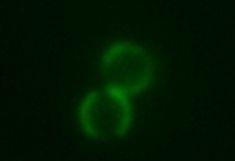Working on this: Peter van Oostrum*, Mudassar Mumtaz Virk*, Emanuela Bianchi^, Serge Ravain° and Erik Reimhult*
This project is supported by the Bilateral ANR-FWF project I 3577-N28
* Laboratory for Biologically Inspired Materials
Concept
Inverse Patchy Colloids (IPC’s) have been recently introduced as a conceptually simple model for heterogeneously charged units. This class of patchy particles is referred to as inverse to highlight the contrast to conventional patches because like-charge patches repel rather than attract each other. Between particles in such systems there is a complex interplay between attractions and repulsions that depend on the relative orientations. Numerical investigations have shown that IPCs with just two patches assemble into a wide array of different aggregates, depending on the patch size and the charges on the particle and the substrate below. We develop approaches to modify the surface of charged colloidal particles to create two polar regions with the opposite charge. We further make either the patches or the polar zone fluorescent such that the position and orientation of individual particles can be traced using confocal microscopy.
Some references:
[1] Bianchi E, Kahl G, Likos CN. Inverse patchy colloids: from microscopic description
to mesoscopic coarse-graining. Soft Matter 2011;7:8313
[2] Bianchi E, Likos CN, Kahl G. Self-assembly of heterogeneously charged particles
under confinement. ACS Nano 2013;7:4657
[3] Bianchi E, Likos CN, Kahl G. Tunable assembly of heterogeneously charged
colloids. Nano Lett 2014;14:3412
[4] van Oostrum PDJ, Hejazifar M, Niedermayer C, Reimhult E. Simple method for
the synthesis of inverse patchy colloids. J Phys 2015;27:234105

